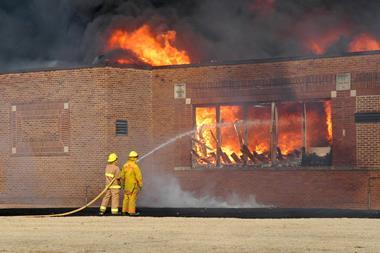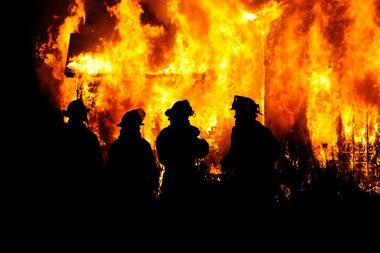Five of the biggest fire protection risks include lack of sprinklers, building combustibility and modern construction methods, fire detection, arson, as well as housekeeping and smoking controls
A lack of sprinklers in schools situated in England are putting children and staff at increased risk.
Out of 673 schools built and open in the UK since 2011, only 15% were fitted with sprinkler systems.
Two thirds of schools in England (67%) have been rated “poor” in terms of fire protection system, one aspect of this being sprinklers.
However, these are only mandatory in Scotland and Wales – not England.
Zurich Municipal is now calling on the government to take “urgent action,” and therefore prevent further disruption to children’s education by implementing better fire protection.
Back in June 2005 the insurer made a similar proposal.

With more than 1,000 fires on school premises every year costing an average of £2.8m, many might benefit from preventative measures. No fatalities from school fires in the eight years up to 2018 were recorded but there were 244 casualties.
Signed letter
The insurer has also highlighted its concern over the building materials used in newer school buildings which are often built from modern methods of construction.
It held a roundtable last week with supporters of the initiative including – Laura Hughes manager in general insurance at Association of British Insurers, Karen Lee MP shadow fire minister and Angela Rayner MP shadow education secretary.
In August Zurich Municipal issued a letter to the Department of Education calling on the government to take action to protect school premises and communities by updating any relevant building regulations and makings sprinklers mandatory in all new and refurbished UK schools. The letter was signed by industry bodies such as Association of British Insurers, Fire Protection Association, National Education Union, National Fire Chiefs’ Council.
This legislation has already passed in Scotland where sprinklers are a legal requirement, almost three (29%) in 10 schools are rated “excellent” there for fire protection. However in England this figure drops to one in 20 (5%).
Preventative action
Tilden Watson, head of education at Zurich Municipal, said: “Preventative action and the mandatory installation of sprinklers as well as the removal of combustible materials could eliminate the impact of loss and disruption to the community, and significantly reduce the cost to the taxpayer for repairs. We urge the Government to regulate and provide improved guidance which clearly requires the mandatory implementation of sprinklers in all new build and major refurbished schools.”
“A change in Government legislation to make sprinklers in schools mandatory not only protects children while they are in school, it often contains the fire to the room it starts in when it happens out of school hours.”
Watson explained that this would not only minimise the level of damage caused but also negate the aftermath which leads to disruption of children’s education while the school is repaired.
“Schools are not just attended by children; they are community hubs which are used outside of school hours by a range of societies and organisations. The loss of these spaces can have significant impacts on local communities lacking accommodation for night classes and local events whilst the school also loses the rental income,” he said.
Huge discrepancy
Zurich’s analysis of 1,000 site surveys across UK showed that there is a huge discrepancy between fire risk management in schools across England and Scotland, with the southern region the least safe for pupils.
It found that the five biggest fire risks include – lack of fixed fire protection including sprinklers, building combustibility and modern construction methods, fire detection, arson, as well as housekeeping and smoking controls.
But it was children and communities in the West Midlands, Wales, South East, Greater London and South West that were at the highest risk of major fire incidents. Schools in Scotland, East Midlands, North East, North West and Yorkshire & Humberside achieved the most positive scores for fire detection and protection risk management practices, making them the safest regions in the UK.
Full support
Andy Dark, Fire Brigades Union assistant general secretary, added that it “fully supports” the insurer’s call to action to make it mandatory, highlighting that it too has made it clear in the past that newly built schools and other high-risk buildings should have sprinkler systems.
He said: “Ideally, sprinklers would be fitted in all schools of whatever age and size. Sprinklers can assist in limiting the spread of fire, the damage it will cause and giving occupants additional time to escape, as well as reducing the risks faced by firefighters attending the incident.
“After a decade of austerity, the fire and rescue service is hanging by a thread. With slowing response times and massive cuts to firefighter jobs, a sprinkler system could make the crucial difference, saving a school from destruction in a fire. Building schools on the cheap is counterproductive - and the cost could be the complete disruption of our children’s education. We need to invest in schools as a part of investing in our future.”













































No comments yet